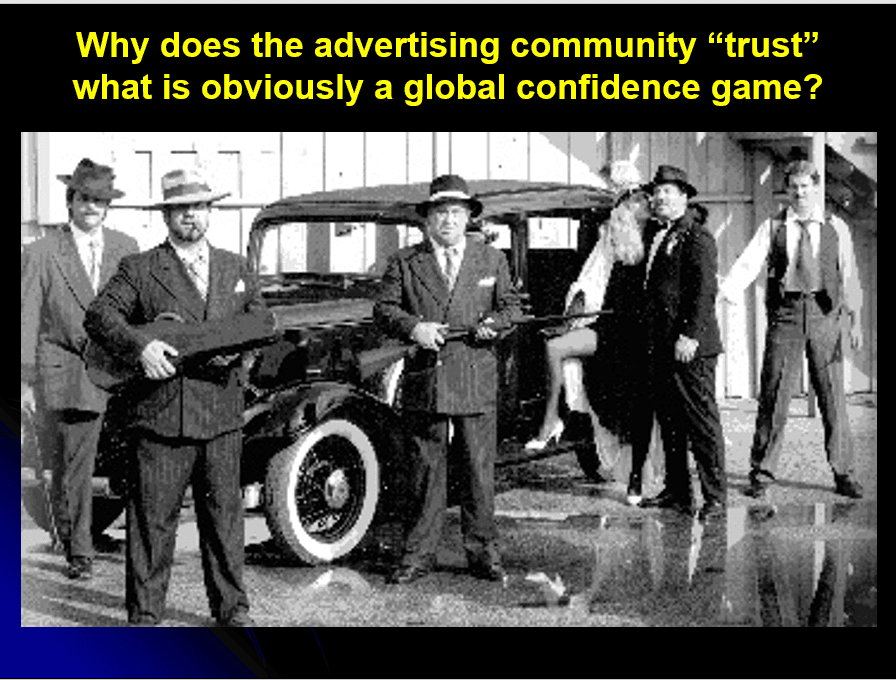BoSacks Lecture: "The Truth About Digital Lies" Recapped
By Bob Sacks
Wed, Jul 26, 2017

Samir Husni, aka Mr. Magazine, held his annual ACT 7 conference at the University of Mississippi in late April. The program was a good round up of what is going on in publishing, what our hopes and fears, challenges and opportunities are, and what the most forward-looking publishers, large and small, are doing to create success in their businesses. And on the last day, drawing together the threads of what had been discussed and adding fresh thoughts in his usual outspoken way, Bo Sacks gave his take on it all in a presentation entitled "The Truth About Digital Lies."
Some of the current dialog about magazine publishing, Bo believes, stems from simple nostalgia, a yearning for the grand old days of the past. That's all well and good unless, by looking backward, we fail to look forward, and by remembering what once worked - but doesn't any longer - we fail to move past traditional thinking, we fail to break new ground, and we fail to challenge our own long-standing assumptions.
Because, like it or not, most of the reading public is leaving print behind. We spend more time with digital devices, where we get instant access to any and all information, than we spend with the printed word. Time spent on digital has exploded, from less than an hour in 2010 to over five hours in 2016. By 2021, nearly 90% of all internet traffic will come from smartphones.
A corollary to the reality of this shift in attention is this: attention can be monetized, but publishers are failing to monetize it effectively. The companies making money from the changes in audience attention flow are Google and Facebook. Well over half the digital ad spend goes to Google and Facebook, with no other digital publisher enjoying even 4% of the total revenues.
As the gigantic platforms gain digital ad revenue, publishers lose. Over the past five years, billions of dollars in advertising spend has been moved from print media to digital. If you push advertisers or their media agencies for the rationale for this switch it does not take long to get to the immovable economic argument of CPM - that is the cost to reach one thousand consumers.
And yet, not even the most naive professional believes that the audience numbers of 1,000 that he's purchased for $10 actually equals 1,000 audience members. How many of the 1,000 will actually see a digital ad long enough to process it? How many are not even humans, but actually bots? Ad fraud is a huge and growing issue in digital advertising; the latest data estimates that bots account for at least 11% of the digital display advertising audience, and that the figure leaps to 52% for the more valuable ads. Digital fraud goes up as the digital ad spend goes up. The Media Ratings Council, which sets standards for advertising measurement, has determined that an online ad can be counted as "in view" if 50% of its pixels are viewable for one second. In short, one thousand digital viewers are never equal to one thousand pairs of eyeballs.
Bo Sacks then discussed several studies on the effectiveness of various kinds of digital advertising. A study published in Harvard Business Review found no evidence that following a brand on social media changes people's purchasing behavior or spurs purchasing by friends. Other studies show similar lack of results: no measurable impact from social media marketing and lack of engagement with social media posts. Sacks shared a devastating quote from Coca-Cola's global marketing chief Marcos de Quinto: "Social media is the strategy for those who don't have a...digital strategy."
The conclusion Sacks made is this: attention can be monetized, but not all attention gets meaningful ROI results. And the revenue destiny of unlimited ads and unlimited content is decreased value.
Which brings us back to magazines. Only material things that are rare and unique have value. And unlike the deluge of data found online, printed magazines are unique, finite, and material. The challenge to print publishers, then, is this: how rare, unique, and indispensable are your publications?
We're living in a time period, Sacks said, that will transform all businesses; a period, where constant innovation is required to not only to stay competitive but to survive. Business as usual is dead; if we do not disrupt we will become disrupted. Marketing and advertising are more complex than ever before, and over the next 10 years our challenge will be to adapt to our tech-driven, utopian vision of making every single message relevant to the receiver. We will see advertising and marketing moving from communicating to predicting, based on real-time human needs. We will move from a focus on what advertising looks like to what advertising feels like. Every ad you see, online and in print, will be based on who you are.
Therefore, for publishers, for marketers, for advertisers, for communicators, the element that is absolutely essential for success is a solid human understanding. Our job is to connect to people, to interact with them in a way that leaves them better than we found them, to help them to get where they want to go.
This is a unique and historic period, Sacks concluded, where the unthinkable has never been more possible-a time of experimentation, innovation, and entrepreneurism such as the world has never seen before.
So if you have a great idea and want to publish in print, go for it. You might be wildly successful.
